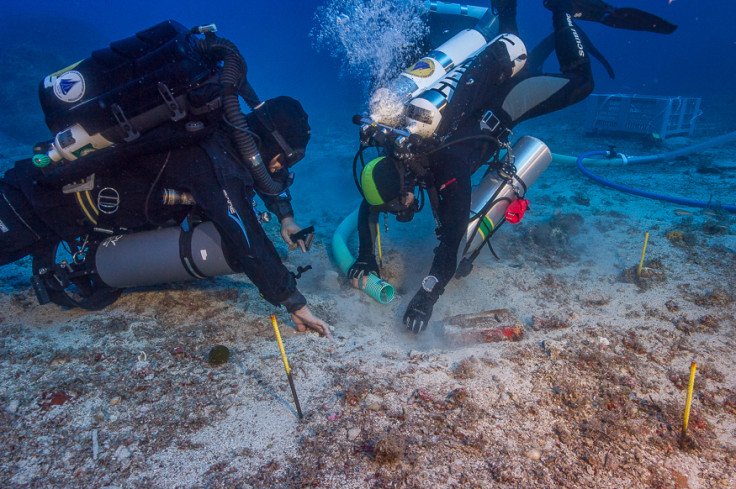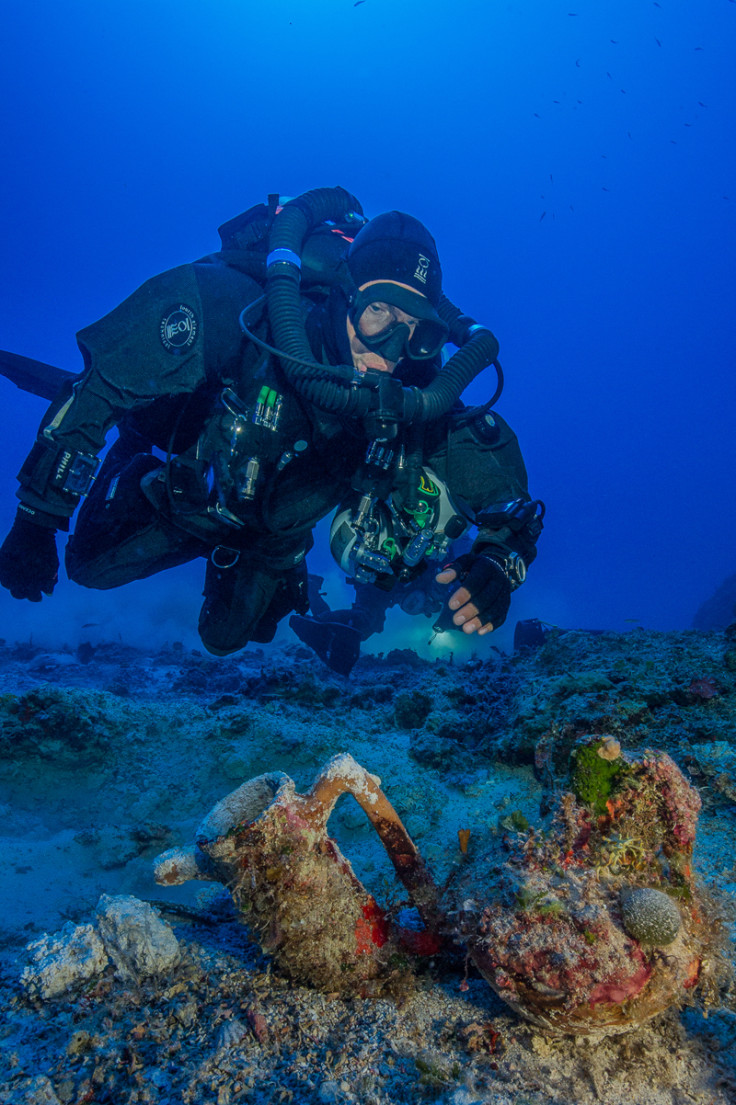Secrets of ancient DNA from Greek shipwrecks uncovered by police forensic science

Analysing ancient DNA is a powerful method for classical studies, helping modern-day scientists understand more about life thousands of years ago. These new techniques can reveal the original contents of ceramic archaeological artefacts.
"By my rough, conservative estimate there are at least three-quarters of a million ancient shipwrecks undiscovered in the Mediterranean alone. Shipwrecks are packets of information that help us understand ancient civilisations," Brendan Foley, an archaeologist at the Woods Hole Oceanographic Institution in Massachusetts, told IBTimes UK.
He calls the Mediterranean seabed"the biggest museum gallery in the world."
A Greek shipwreck located between Chios and Oinousses revealed two 2,400-year-old ceramic jars containing the ancient DNA fragments of olive and oregano in one, and mastic (plant resin) in the other.
Mastic has been used as a medicine since antiquity, and in ancient Greece it was given as a remedy for snakebite. The first-century Greek physician Pedanius Dioscorides mentions the healing properties of mastic in his book De Materia Medica. Hippocrates wrote that the mastic was good for prevention of digestive problems and colds, and Galenus suggested that the resin was useful for bronchitis and improving the condition of the blood.
Ceramic artefacts are ubiquitous within terrestrial and underwater archaeological sites. In the ancient Mediterranean, specially designed ceramic shipping containers (amphoras) carried a wide range of goods.
Until now, determining the original contents of all these ceramic objects has been difficult, aided only occasionally by physical evidence (eg olive pits, hardened resins, seeds, chocolate residue) found inside excavated jars or on graffiti on their exteriors). With improved DNA methods, archaeologists will be able to identify artefacts' contents even when no physical remains are apparent.
Treasure of the deep
Currently, Foley is working with Greek archaeologists to explore a massive wreck off the Greek island of Antikythera. The ship there sank more than 2,000 years ago. It carried many expensive objects, including statues, glass bowls, perfume jars, coins and jewellery. Greek fishermen were diving for sea sponges when they found the wreck in 1900.
Archaeologists excavating the Antikythera shipwreck expedition in 2015 created a high-resolution, 3D map of the site using stereo cameras, mounted on an autonomous underwater vehicle (AUV).
The team created 3D virtual reconstructions of many artefacts on the seabed, and 3D-modelled all of the major recovered finds once on shore. A series of scientific analyses are now being conducted on these items, including DNA analysis of ancient ceramic jars to identify the 2,000 year-old food, drinks, perfumes, and medicines contained in them. Isotope analysis of lead objects will determine where the lead was mined, to reveal the home port of the ship.

Foley thinks that underwater archaeology is one of the most exciting ways to bring the past back to life, as there is a huge amount of data on the sea floor waiting to be tapped into. "The kinds of things you find on the seabed are different from what you find on land sites. A lot of land archaeology is carried out in tombs and burials which is a very specific record, whereas in the water you've got everything – from the most mundane stuff of everyday trade to some of the very valuable, elite goods," he says.
"Bronze statues are preserved on shipwrecks that would otherwise have been melted down and re-used if it were on land."
Even more exciting is extracting ancient DNA from empty transport jars on shipwrecks. He is carrying out research on transport jars from classical Greece, from around 500-300 BCE and finding out what was being traded in the world's first economies.
"The conventional wisdom is that these jars mostly held wine. If the archaeological literature was correct, then 90% of the ancient economy was based on this single commodity and this just doesn't past the smell test," Foley argues.
Rewriting history
So rather than finding grape DNA, Foley and his team have found olive DNA, mixed with around seven different species – a lot of vegetable materials – legumes, beans, nuts and walnuts Also herbs, particularly juniper, which the ancients used for flavouring. "Only one jar was found containing grape DNA in the dozens we've looked at, and that seems certain to contain wine," he adds.
The archaeological team tried several methods to extract the DNA. The first way was by simply using a steel tool to scrape out some ceramic shavings and fragments from inside the amphora. Microbiologist Maria Hanson worked on the findings in the laboratory, to ascertain the origin of the samples.
This process only made it possible to work on a very limited surface. Foley turned to the latest technology available, which was being used by the Massachusetts state police forensics lab. "We asked them how they recovered trace DNA from crime scenes and they put us on to these swabs that they use to extract tiny bits of DNA from. We tried this with the archaeological artefacts and it worked much better than the physical scraping method, and has the benefit of being completely non-destructive."
The archaeologist's goal is to find out how people transitioned from the Stone Age to the Bronze Age. "You can think of these shipwrecks as ancient telephone calls. The transmission lines are the shipping lanes and the ship's themselves are packets of information. With our technology now we can go out and find these telephone lines and eavesdrop on these ancient telephone calls. It would give us a really good understanding of how our distant ancestors created and invented civilisation, and actively transmitted civilisation across time and space."
© Copyright IBTimes 2025. All rights reserved.






















